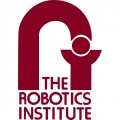Carnegie Mellon University
Learning and Inference in Factor Graphs with Applications to Tactile Perception
Abstract: Factor graphs offer a flexible and powerful framework for solving large-scale, nonlinear inference problems as encountered in robot perception and control. Typically, these methods rely on handcrafted models that are efficient to optimize. However, robots often perceive the world through complex, high-dimensional sensor observations. For instance, consider a robot manipulating an object in hand [...]
Learning Optical Flow: Model, Data, and Applications
Abstract: Optical flow provides important information about the dynamic world and is of fundamental importance to many tasks. In this talk, I will present my work on different aspects of learning optical flow. I will start with the background and talk about PWC-Net, a compact and effective model built using classical principles for optical flow. Next, [...]
Hands-On Interactions
Abstract: Our sense of touch is present in almost all our interactions with the world, from providing us with the feedback necessary to perceive and manipulate objects without having to look at them, to allowing our limbs to move and walk without us having to think about how to take the next step. We use [...]
Distributed Dissipativity: Applying Foundational Stability Theory to Modern Networked Control
Abstract: Despite its diverse areas of application, the desire to optimize performance and guarantee acceptable behaviour in the face of inevitable uncertainty is pervasive throughout control theory. This creates a fundamental challenge since the necessity of robustly stable control schemes often favors conservative designs, while the desire to optimize performance typically demands the opposite. While [...]
Towards Complex Robot Motions with Reinforcement Learning
Abstract: Reinforcement learning has shown to be a powerful tool for decision-making problems. In this talk, we present the opportunities and challenges of enabling increasingly complex robot behavior with reinforcement learning. First, we present a system that combines reinforcement learning and extrinsic dexterity to solve a novel task of “occluded grasping”. To reach an occluded [...]
Haptic Perspective-taking from Vision and Force
Abstract: Physically collaborative robots present an opportunity to positively impact society across many domains. However, robots currently lack the ability to infer how their actions physically affect people. This is especially true for robotic caregiving tasks that involve manipulating deformable cloth around the human body, such as dressing and bathing assistance. In this talk, I [...]
Do Vision-Language Pretrained Models Learn Spatiotemporal Primitive Concepts?
Abstract: Vision-language models pretrained on web-scale data have revolutionized deep learning in the last few years. They have demonstrated strong transfer learning performance on a wide range of tasks, even under the "zero-shot" setup, where text "prompts" serve as a natural interface for humans to specify a task, as opposed to collecting labeled data. These models are [...]
RI Council Meeting
RI Council is a leadership group made up of the Director of RI, Academic Program Leads, Committee Chairs, and members at large as appointed by the Director. RI Council meets generally once a week to discuss department business.
Perception-Action Synergy in Uncertain Environments
Abstract: Many robotic applications require a robot to operate in an environment with unknowns or uncertainty, at least initially, before it gathers enough information about the environment. In such a case, a robot must rely on sensing and perception to feel its way around. Moreover, it has to couple sensing/perception and motion synergistically in real [...]
Carnegie Mellon University
Driving Reconfigurable Unmanned Vehicle Design for Mobility Performance
Abstract: Unmanned ground vehicles are being deployed in increasingly diverse and complex environments. Advances in the field of robotics, including perception technology, computing power, and machine learning, have brought robots from the lab to the real world. Remote and autonomous vehicles are now used to explore volcanoes, caves, pipes, war zones, disaster sites, and even [...]







